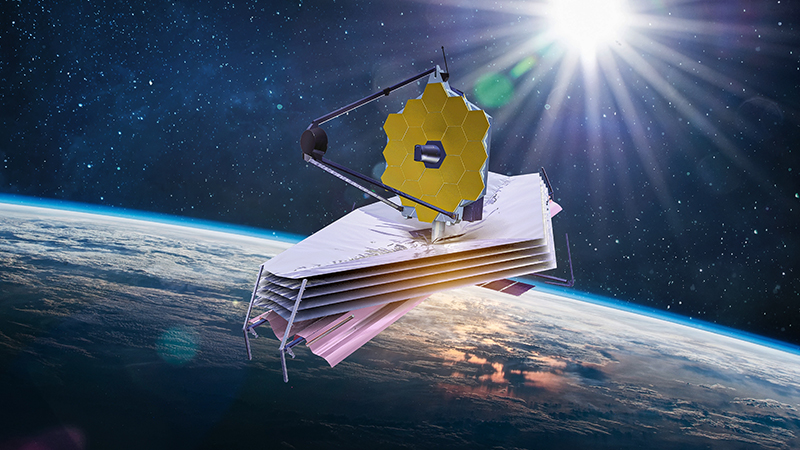

NASA has announced it has developed a space telescope to succeed the Hubble Space Telescope. Named the James Webb Telescope, it will be by far the most powerful instrument launched into space.
In preparation for this momentous launch, let us look at what sets it apart from previous space telescopes.
The James Webb Telescope is a space telescope that will collect data from light waves. It uses an 18-panel hexagonal mirror, with an area of 25.4 square metres, to reflect spectra into its collection system. As such, it has the largest collection area of any space telescope ever built, meaning it can collect light signals from fainter objects farther away.
Unlike the Hubble Telescope, which observes near-ultraviolet, visible, and near-infrared spectra, the James Webb Telescope will observe long-wavelength visible light and mid-infrared. As a basic comparison of the two, the James Webb will be a hundred times more “powerful” in its observation capabilities.
But, its benefits go well beyond this. The chosen spectra mean scientists can see further back into the universe’s timeline: 13.6 billion years rather than Hubble’s 13.5 billion years. It might not sound like much, but the extra 100 million years puts it that much closer to the events of the Big Bang. As such, it will allow us to see “baby galaxies” and develop a greater understanding of how they formed in the early stages of the universe.
Another difference between the two is orbit locations. Hubble sits in Low Earth, geocentric orbit. The James Webb, however, will be in a Sun balance orbit (L2 orbit), roughly a million miles away from Earth. Importantly, this means less interference and temperatures below 50K, which are necessary for infrared observation.
Along with observing further back into the universe’s history, the James Webb Telescope has one important mission: studying exoplanets. It will not look specifically for extraterrestrial life, but will rather study the atmospheres of exoplanets for biosignatures. These are potential signs of life, such as methane, which will allow astronomers to better understand what life could look like on other planets.
The James Webb Telescope will be Hubble’s direct successor. NASA plans to operate Hubble until the 2030s or 2040s depending on budget and its operational capacity. Although Hubble is more than 30 years old, it still has some life left in it. Whether this remains the case once the Webb Telescope launches is a different matter.
The James Webb Telescope will launch on the 18th of December on board an ESA Ariane 5 rocket. From there, it will take roughly one month to reach its orbit location and then another five months to unfold its mirror and set up the equipment. We can likely expect its first images around June 2022.
Overall, the telescope has cost $9.66 billion, including the operational budget. It is roughly the same as Hubble’s overall budget, including development, maintenance, and equipment upgrades.
However, the key difference (and perhaps limitation) is that the James Webb Telescope will be unreachable in L2 orbit with the technology available during the telescope’s development and build stages. As such, it is vital to ensure it works the first time around.
The James Webb Telescope holds great potential for astronomers of the future. It will be fascinating to see further back into the universe’s history and to better understand how it came to be. We can only hope the images it delivers will be on par with Hubble’s.
